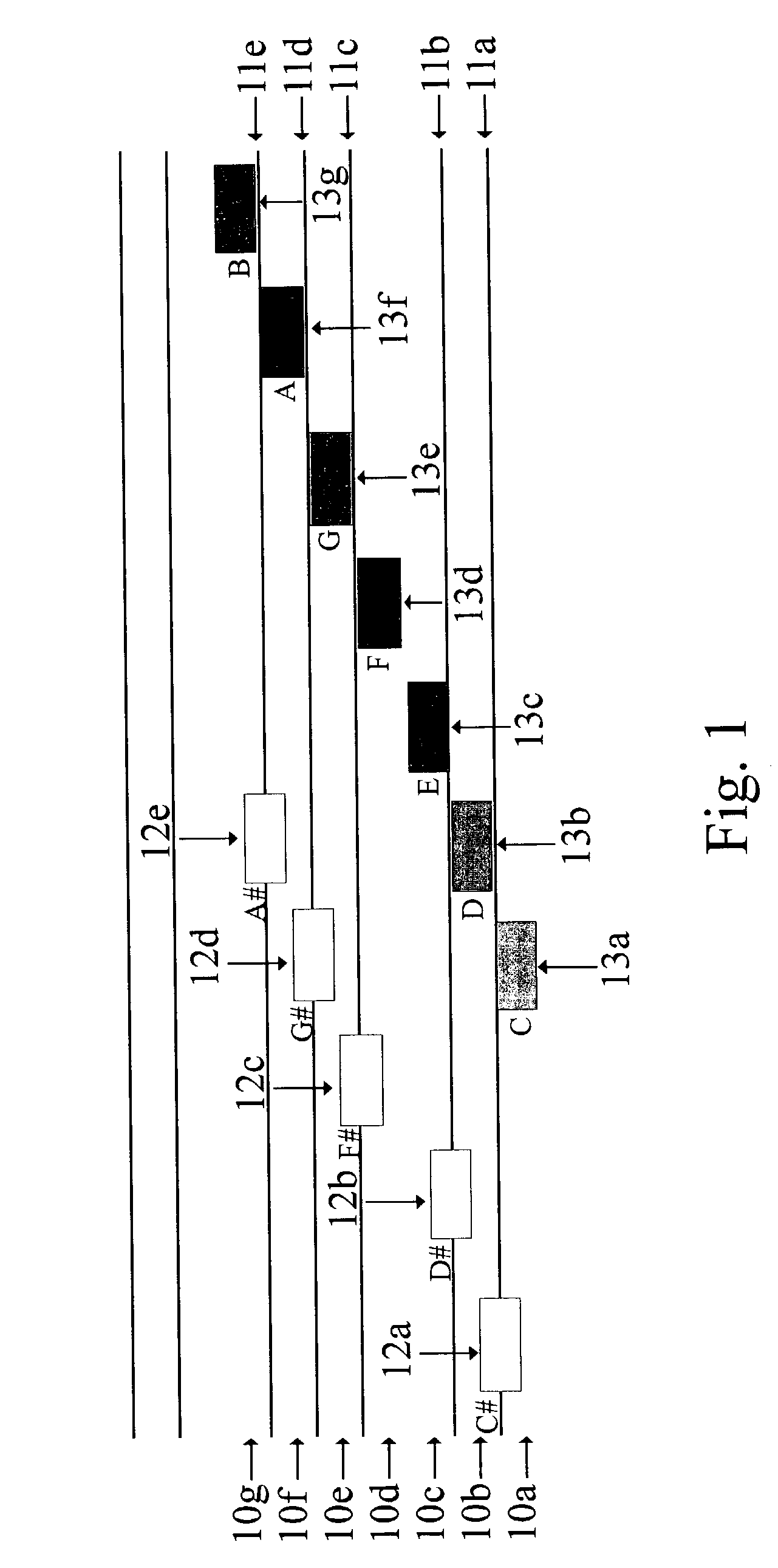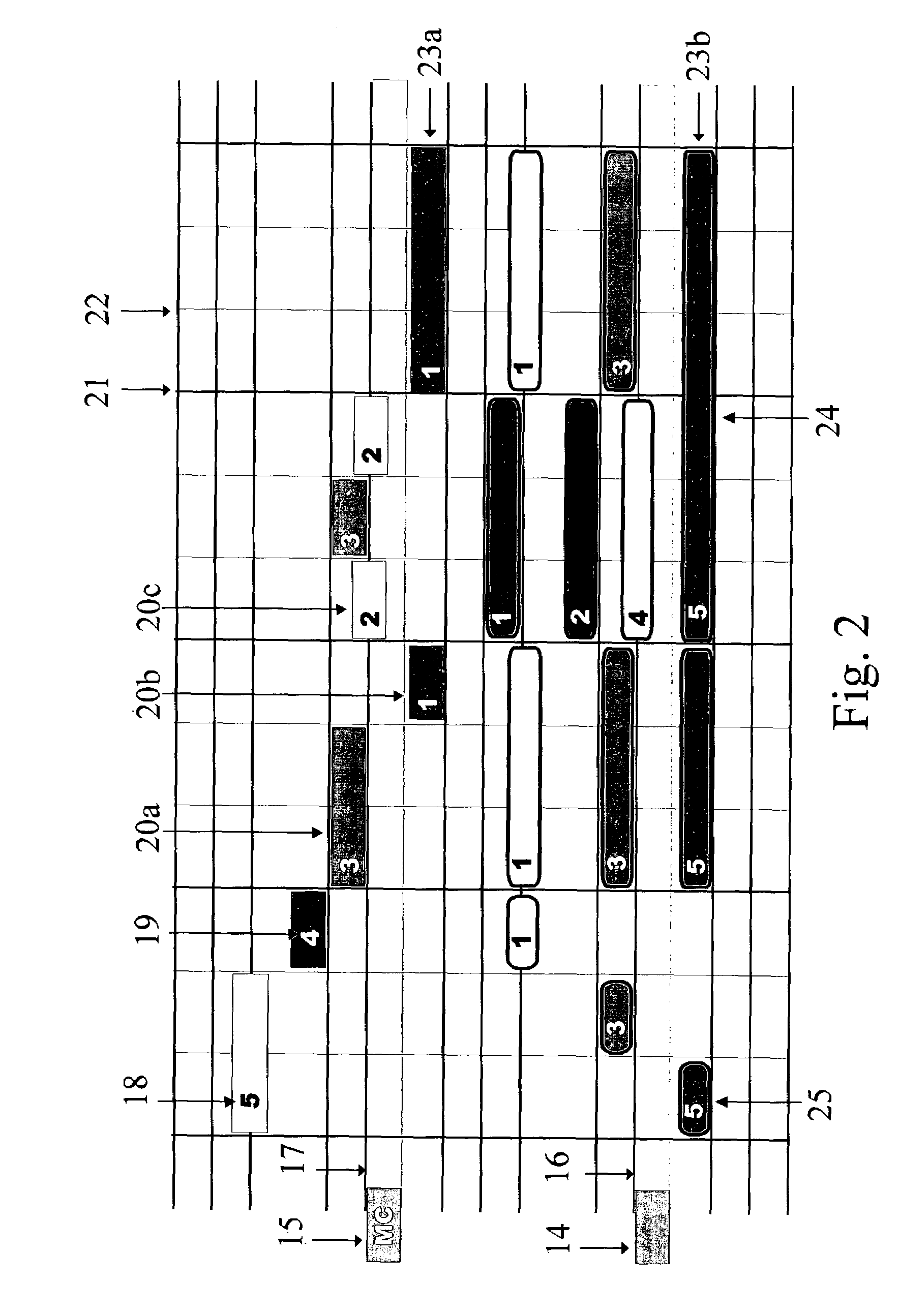Graphic color music notation for students
a music notation and graphic color technology, applied in the field of new spatially oriented graphic color notation for music, can solve the problems of difficult reading, complex visual and confusing notation, and many problems for new students of musical instruments
- Summary
- Abstract
- Description
- Claims
- Application Information
AI Technical Summary
Benefits of technology
Problems solved by technology
Method used
Image
Examples
Embodiment Construction
[0048]1. Construction of the Staff
[0049]The preferred embodiment of this form of music notation divides the vertical space of an octave into 7 spaces representing the 7 notes of the C major scale. 5 staff lines per octave show the location of the five remaining accidental notes. C major notes are placed between the lines, while the remaining 5 notes straddle the lines, overlapping the C major notes. Multiple forms of the staff are provided. One staff specifically for keyboard instruments combines right and left hand notes for better spatial recognition and covers the four octaves around middle C in one staff. A separate form of the staff separates right and left hand into two staffs, each including middle C. This version is intended for use in cases such as hymns where lyrics are best placed in the center of the staff. For pieces and / or instruments with notes in other ranges the staff is extended up or down to accommodate the range. A contracted form of the staff is useful for begin...
PUM
 Login to View More
Login to View More Abstract
Description
Claims
Application Information
 Login to View More
Login to View More - R&D
- Intellectual Property
- Life Sciences
- Materials
- Tech Scout
- Unparalleled Data Quality
- Higher Quality Content
- 60% Fewer Hallucinations
Browse by: Latest US Patents, China's latest patents, Technical Efficacy Thesaurus, Application Domain, Technology Topic, Popular Technical Reports.
© 2025 PatSnap. All rights reserved.Legal|Privacy policy|Modern Slavery Act Transparency Statement|Sitemap|About US| Contact US: help@patsnap.com



